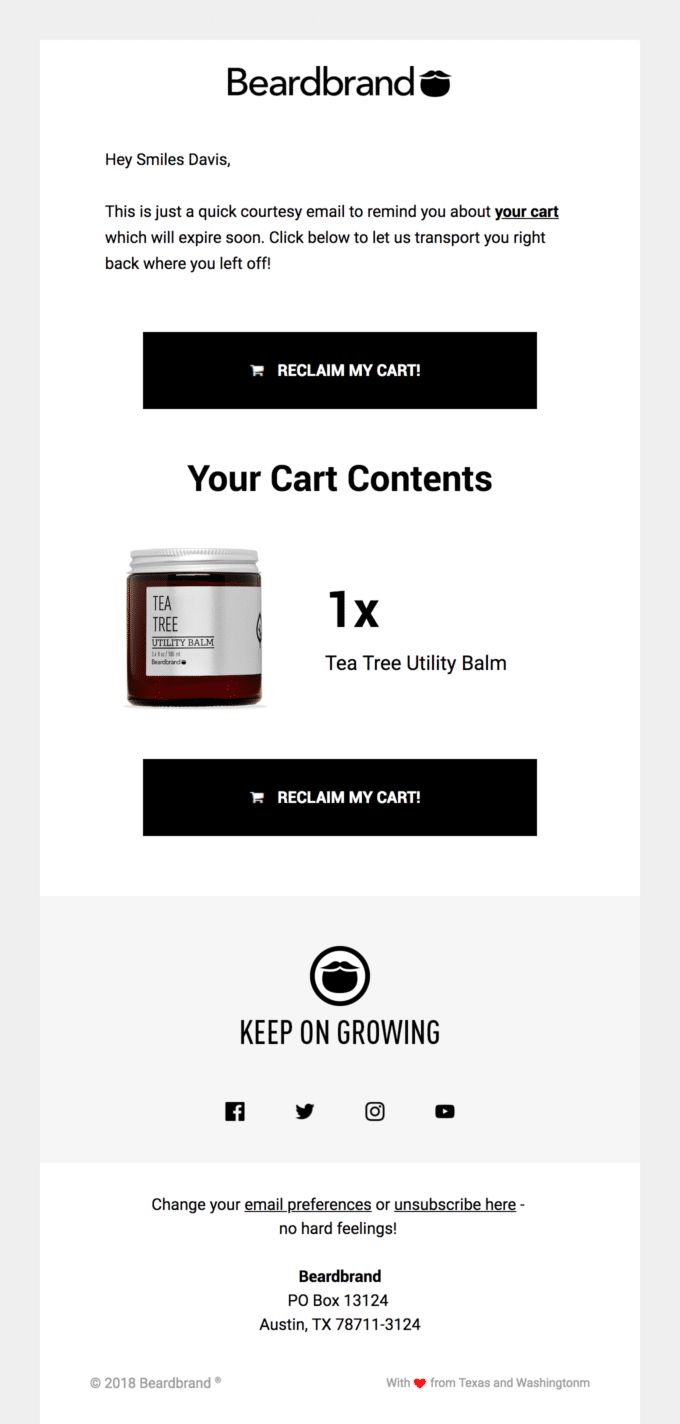Did you know the first item ever ordered on Amazon was a book in 1995? The industry has come a long way from that purchase, and there’s no looking back for online retailers.
At the end of 2019, total retail ecommerce sales amounted to $3.53 trillion worldwide, and the revenues are predicted to grow to $6.54 trillion by 2022. As a whole, ecommerce has revolutionized the way consumers shop and continues to evolve to meet the needs of online habits.
When it comes to new trends—whether it’s communication, customization, or integrations—you need to focus on a direction that’ll benefit your customer. Trends will come and go, but it’s important to understand what your customers need to enhance their experience. Read on to discover a few of the big ecommerce trends in 2020 that online entrepreneurs need to be aware of.
What are ecommerce trends?
Ecommerce trends are technology, enhancements, or marketing tactics used by online stores to improve the user experience for customers. The buying experience can be enhanced through speed, ease of use, visibility, and more, so customers become loyal to your brand and continue converting. Online retailers embracing ecommerce trends can expect to see big returns in 2020, as it’s predicted that there’ll be over 2.14 billion online shoppers by 2021.
While small business ecommerce stores may not have the time or resources dedicated to ecommerce enhancements, it’s important to choose the trends that’ll best suit your targeted audience and not get caught up in the hype of marketing fads.
Why should online retailers follow trends?
As ecommerce continues to grow, the industry is becoming increasingly competitive. To stay ahead of your competition, ecommerce trends need to be monitored and taken advantage of to ensure you’re looking toward the future. It’s estimated that 95% of purchases will be made online by 2040 and trends will continue to evolve quickly to keep up with consumer demand.
No matter if you’re running a mature ecommerce shop or beginning startup, ecommerce shops and startups need to continue adopting emerging marketing trends because relevancy is a priority. In the industry, you could be in one day and out the next. You need to constantly be aware of the changes occurring in order to keep your products or services in front of customers’ eyes and drive your ecommerce store forward.
8 top ecommerce trends in 2020 digital marketers should know
Understanding your customers’ behaviors is the most important factor when considering upcoming trends. What they buy, how they shop, and what marketing tactics they respond to are all deciding factors in what future trends you should invest in. Are you ready to dive into the future of ecommerce? Let’s take a look at the top ecommerce trends in 2020.
1. Personalized email campaigns
Personalization was big in 2019, but it’s a necessity in 2020, as more consumers want to feel personal connections with brands. Who can blame them? Between targeted social media ads and remarketing campaigns, we’re all looking for something genuine.
According to Juniper Research, personalized email campaigns drive 18 times more revenue than traditional mass emails. Even more promising is that email remains the most effective digital marketing tactic. The great thing about personalized email campaigns is that they can all be automated with a click of a button, meaning less work and more rewards for ecommerce shops.
How can you customize your emails? Consider the following:
- Segment your subscribers based on location, gender, purchase history, and more.
- Personalize your copy and subject lines with the first name of your customer.
- Utilize unique images and products based on past activity.
- Send transactional emails after each action like order confirmation, shipping confirmation, password reset, and abandoned cart notification emails.
- Customize based on customer behavior on your website.
Source: Really Good Emails
2. User-generated content
Did you know that 79% of consumers agree that their purchasing decisions are influenced by user-generated content? How many times have you looked at reviews until purchasing a product online? User-generated content acts as a recommendation or testimonial from a friend, which makes your brand seem more trusting and credible in the eyes of a new consumer. Additionally, user-generated content creates a community of brand advocates which increases your engagement rates. For your ecommerce store, consider utilizing social media content, reviews, live streaming/videos, and case studies to amplify your products on your website and digital communications.
3. Shopping on social media
In 2020, social media is a lot more than shares, likes, and dog photos—these platforms are turning into mini search engines for online shopping. Fifty-five percent of online shoppers have bought a product through a brand’s social post. The good news for ecommerce shops is that many social platforms are making it easy for stores to sell through embedded links, clickable products in posts, and paid advertising. To help implement this trend and encourage additional shopping touchpoints, ecommerce stores should include their social media links throughout their website and email communications.
Source: J.Crew, Instagram
4. Flexible payments
If your store has more expensive products, your conversion rate might be lower because consumers view higher price tags as a risky investment. However, the new ecommerce trend in 2020 includes offering flexible payment options like Final, Affirm, and Afterpay—and probably more to come.
These services break larger payments into smaller ones for a few months, thus increasing conversion rates since the payments are more manageable. Overall, flexible payments help improve the buyer experience, as you’re catering to their needs.
5. Mobile device usage
As mobile transactions increase, you need to make sure your ecommerce store can handle the orders. Many ecommerce shops are moving towards pay-per-click advertising. This can be a huge investment but can result in big returns when done correctly.
Besides advertising, ecommerce stores need to:
- Ensure their website is responsive to fit any screen size or device type.
- Create email communications that are mobile-friendly and responsive to email service providers.
- Develop an Android and iOS app for a better shopping experience.
Source: Google
6. Environmental consumerism
As the millennial generation paves the way for greener consumerism habits, ecommerce brands will need to take note of this 2020 trend and implement more sustainable business practices.
In 2018 alone, 50% of digital consumers said that environmental concerns impacted their purchasing decisions. Consumers feel more responsible for the planet, so, in turn, they expect ecommerce shops to cater to their eco-friendly demands.
Online retailers can become more sustainable by sourcing products from fair-trade organizations, using recycled packaging materials, and sending emails instead of direct mail.
7. Artificial intelligence
By 2020, global retailers will spend $7.3 billion on artificial intelligence, which is a $2 billion increase from 2018. AI helps ecommerce shops target customers and personalize their entire customer experience, which enhances the brand’s competitive advantage. AI can help ecommerce marketing by:
- Curating and generating content that’s relevant to the user based on their history.
- Delivering digital advertising to the right customers based on big data.
- Answering customer questions and anticipating concerns via chatbot.
8. Augmented reality
If you’re looking to provide a premier buying experience, investing in augmented reality (AR) is a powerful ecommerce trend in 2020. For the longest time, consumers were apprehensive about purchasing products online because of their inability to see the product firsthand.
However, AR bridges that gap and allows consumers to visualize products in a more realistic setting. Some ecommerce retailers have already taken advantage of this technology, thus giving their customers an enhanced personalized experience and a competitive advantage.
Wrap up
As technology continues to advance and change with consumer behavior, it’s important to look out for ecommerce trends in 2020. However, trends come and go, and it’s equally crucial to understand which trends will benefit your customers and business before you invest money.
After all, the end goal of adopting ecommerce trends is that you have the opportunity to build a long-lasting relationship with your customers. The right ecommerce trend has the potential to impact customer experience and result in more conversions for your brand to grow.
Now you’re ready to adopt new ecommerce trends in 2020.
Now that you have a handle on the top ecommerce trends in 2020, it’s time to figure out which methods would work best for your ecommerce business.
CM Commerce offers you a way to grow your brand with automated email marketing. Sign up for free today!








